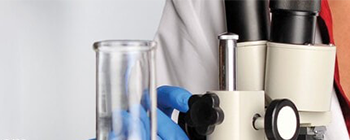Learn More
Invitrogen™ Dimeric Cyanine Nucleic Acid Stains 
Dimeric Cyanine Nucleic Acid stains are eight spectrally distinct dyes for ultrasensitive fluorescence detection of nucleic acid in imaging and flow cytometry. They are cell-impermeant and have bright fluorescence signals, low background, and strong binding affinity with nucleic acid.
Supplier: Invitrogen™ N7565
Description
Dimeric Cyanine Nucleic Acid stains are cell-impermeant dyes that enable ultrasensitive fluorescence detection of nucleic acid. These dyes have very bright fluorescence signals, strong binding affinity for dsDNA, and large fluorescence enhancement upon binding to nucleic acid. They can be used as dead cell indicators and nuclear counterstains in fluorescence microscopy and flow cytometry. Dimeric cyanine nucleic acid dyes can also be used to stain nucleic acids on solid supports, as well as in capillary and gel electrophoresis applications.
These eight spectrally distinct dimeric cyanine nucleic acid stains are among the highest sensitivity fluorescent probes available for nucleic acid staining. The carbocyanine dimers have very strong binding affinity for dsDNA, with dissociation constants in the micromolar range and nucleic acid-binding affinities greater than their parent monomer dyes. In addition to their high affinity for nucleic acids, cyanine dimers are essentially nonfluorescent in the absence of nucleic acids and exhibit 100- to 1000-fold fluorescence enhancements upon binding to DNA. The extinction coefficients and fluorescence quantum yields of the cyanine dimers bound to DNA are high, resulting in very bright fluorescence signals.
Features of the dimeric cyanine nucleic acid stains:
• High affinity—strong binding affinity for dsDNA with dissociation constants in the micromolar range
• Low background—nonfluorescent in the absence of nucleic acids
• Large fluorescence enhancement—100- to 1000-fold fluorescence enhancements upon binding to DNA
• Bright fluorescence—high extinction coefficients and fluorescence quantum yields resulting in very bright fluorescence signals
The dimeric cyanine dyes are useful for many applications including fluorescence microscopy and flow cytometry. These dyes are impermeant to viable cells and can be used as dead cell indictors. Their bright fluorescence signals and low backgrounds make them ideal for staining nucleic acids on solid supports, such as microarrays. They are also useful as nuclear and chromosome counterstains for multicolor fluorescence labeling experiments such as in immunohistochemistry (IHC) and immunocytochemistry (ICC). Prestaining nucleic acid samples prior to gel or capillary electrophoresis is also possible due to the extraordinary stability of the dye-nucleic acid complexes.
The dimeric cyanine nucleic acid stains are supplied in a unit size of 200 μL as 1 mM solutions in dimethylsulfoxide (DMSO) or dimethylformamide (DMF) for the POPO-3 stain. The fluorescence spectra of the eight dimeric cyanine nucleic acid stains cover the entire visible wavelength range and each dye differs in extinction coefficient and quantum yield.
POPO™-1 Iodide (434/456)
The blue-fluorescent POPO-1 stain has excitation/emission maxima ∼434/456 nm when bound to dsDNA in aqueous solution. It can be excited by ultraviolet (UV) excitation sources and the Hg arc (only) 436 nm laser.
BOBO™-1 Iodide (462/481)
The blue-fluorescent BOBO-1 stain has excitation/emission maxima ∼462/481 nm when bound to dsDNA in aqueous solution. It can be excited by ultraviolet (UV) excitation sources and the He-Cd 442 nm laser.
YOYO™-1 Iodide (491/509)
One of our highest affinity nucleic acid stains, the green-fluorescent YOYO-1 stain shows over 1000-fold increase in fluorescence when bound to dsDNA. It has excitation/emission maxima ∼491/509 nm when bound to nucleic acids and can be excited by ultraviolet (UV) excitation sources and the Ar 488 nm laser. YOYO-1 stain has proved extremely useful in the analysis of single molecules of DNA and is used in super-resolution microscopy applications such as STORM.
TOTO™-1 Iodide (514/533)
The green-fluorescent TOTO-1 stain has excitation/emission maxima ∼514/533 nm when bound to dsDNA in aqueous solution. The DNA-bound TOTO-1 dye also has a short-wavelength peak at ∼275 nm and can be excited by ultraviolet (UV) excitation sources and the Ar 514 nm laser.
POPO™-3 Iodide (534/570)
The yellow-fluorescent POPO-3 stain has excitation/emission maxima ∼534/570 nm when bound to dsDNA in aqueous solution. It can be excited by the He-Ne 543 nm laser.
BOBO™-3 Iodide (570/602)
The orange-fluorescent BOBO-3 stain has excitation/emission maxima ∼570/602 nm when bound to dsDNA in aqueous solution. It can be excited by the Kr 568 nm laser.
YOYO™-3 Iodide (612/631)
The orange-fluorescent YOYO-3 stain has excitation/emission maxima ∼612/631 nm when bound to dsDNA in aqueous solution. It can be excited by the He-Ne 594 nm laser.
TOTO™-3 Iodide (642/660)
The far-red fluorescent TOTO-3 stain has excitation/emission maxima ∼640/660 nm when bound to dsDNA in aqueous solution. It can be excited by the He-Ne 633 nm laser. The long-wavelength fluorescence of TOTO-3 stain is similar to Alexa Fluor 647 or Cy5 dyes and is well separated from that of commonly used fluorophores, such as Alexa Fluor dyes, Oregon Green, fluorescein (FITC), rhodamine (TRITC), Texas Red, coumarin (AMCA), Marina Blue, and Pacific Blue dyes. Additionally, long-wavelength light–absorbing dyes such as TOTO-3 stain have the advantage that their fluorescence is usually not obscured by the autofluorescence of tissues.
TOTO-3 stain has high selectivity for nuclear over cytoplasmic staining, making it useful as a nuclear counterstain and dead cell indicator, and is among the highest-sensitivity probes for nucleic acid detection. TOTO-3 stain gives strong and selective nuclear staining in cultured cells and in paraffin sections. Simultaneous labeling with a green-fluorescent SYTO dye and cell-impermeant TOTO-3 stain is frequently used to assess cell viability. TOTO-3 has a much higher extinction coefficient than DNA-bound propidium iodide and has been used for unique applications such as detecting microbial cells and microorganisms in soil environments.
Nucleic Acid Stains Dimer Sampler Kit
For researchers designing new applications, the Nucleic Acid Stains Dimer Sampler Kit provides samples of the eight spectrally distinct analogs of the dimeric cyanine dyes for testing. This kit contains 25 μL each of the following high-affinity nucleic acid stains based upon symmetric dimers of cyanine dyes:
• BOBO-1 iodide (Cat. No. B3582)
• BOBO-3 iodide (Cat. No. B3586)
• POPO-1 iodide (Cat. No. P3580)
• POPO-3 iodide (Cat. No. P3584)
• TOTO-1 iodide (Cat. No. T3600)
• TOTO-3 iodide (Cat. No. T3604)
• YOYO-1 iodide (Cat. No. Y3601)
• YOYO-3 iodide (Cat. No. Y3603)
Order Info
Shipping Condition: Room Temperature
Specifications
| Orange, Green, Yellow, Red, Blue | |
| 436, 442, 488, 514, 543, 568, 594, 633 nm | |
| Kit | |
| Fluorescence Microscope | |
| Fluorescence | |
| 456, 481, 509, 533, 570, 602, 631, 660 nm | |
| Room Temperature | |
| Stains Dimer Sampler Kit | |
| Cell-impermeant |
| Contains 25 μL of a 1 mM solution in DMSO of each dye in separate vials. Store in freezer -5°C to -30°C and protect from light. |
|
| Cell-impermeant | |
| Fluorescent Labeling | |
| 200 μL | |
| Nucleic Acid Stains Dimer Sampler Kit | |
| BOBO™, POPO™, TOTO™, YOYO™ | |
| Fluorescent Dye | |
| Nucleic Acids |
For Research Use Only. Not intended for any animal or human therapeutic or diagnostic use.



